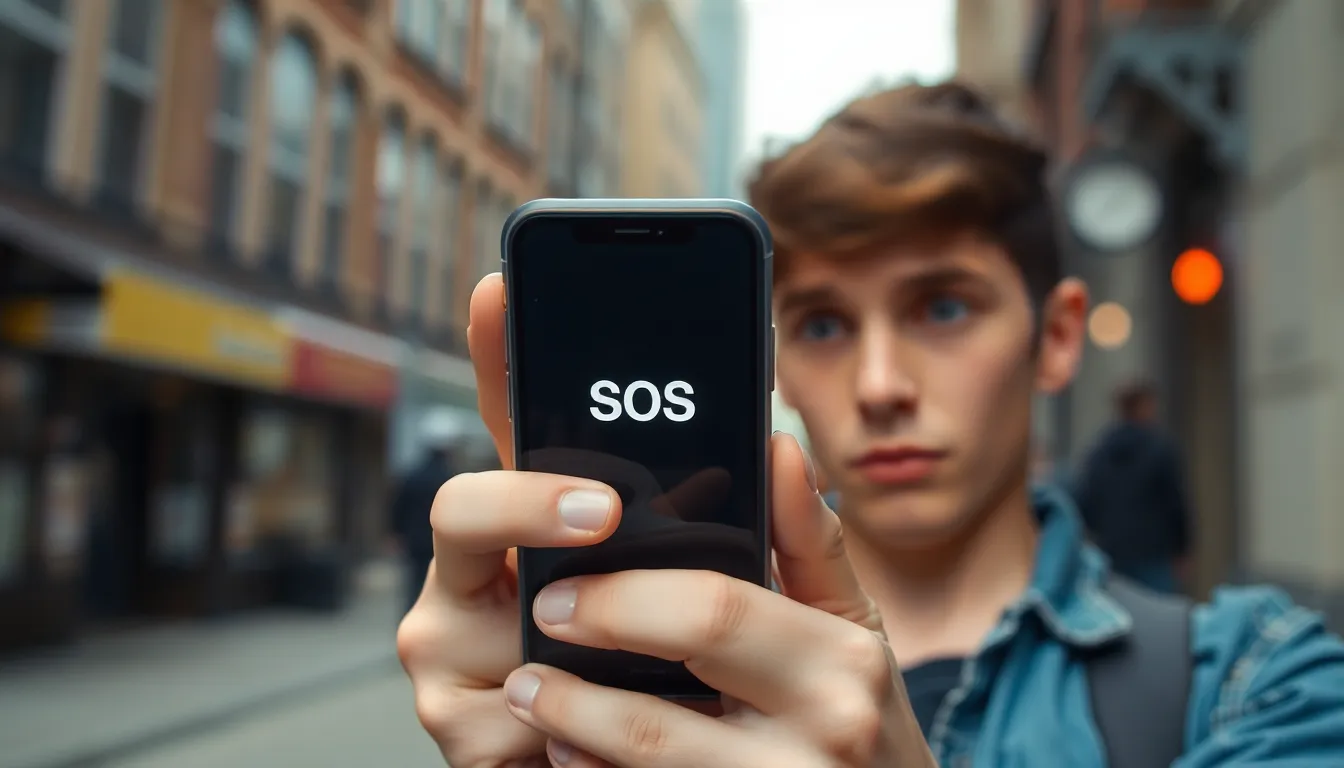Table of Contents
TogglePicture this: you’re scrolling through your favorite cat memes when suddenly your iPhone decides to throw a curveball, flashing “SOS” like it’s calling for backup. Panic sets in as you wonder if your phone has developed a secret life as a superhero. But fear not, this isn’t a distress signal; it’s a common issue that many iPhone users face.
Understanding why your iPhone is shouting for help can save you from unnecessary stress and confusion. Whether it’s a settings mishap or an accidental activation, unraveling the mystery is easier than you think. Let’s dive into the quirky world of iPhone SOS alerts and equip you with the knowledge to keep your device calm and collected.
Understanding The SOS Feature
The SOS feature on the iPhone exists for emergency situations. Users activate it inadvertently at times, leading to the confusion of seeing “SOS” on their screens.
What Is SOS Mode?
SOS mode serves as an emergency communication tool. This setting allows individuals to quickly call for help without navigating through menus. An iPhone enters this mode when the side button is pressed five times rapidly. Users may also enable auto-call options, which automatically dial emergency services after a set period. Customization options allow users to designate emergency contacts that receive notifications during these situations.
How Does It Work?
SOS mode functions through a combination of hardware and software integration. When activated, the phone attempts to connect to cellular networks, even if no service signal appears. In areas without a carrier signal, it can utilize available networks, enabling communication with emergency services. Users also receive alerts confirming an SOS activation and can cancel the call if initiated accidentally. The device continues to display “SOS” until the user exits the mode or completes the emergency communication.
Common Reasons For SOS Messages

Several factors can cause an iPhone to display SOS messages. Understanding these reasons can alleviate confusion and anxiety for users.
Network Issues
Network issues often lead to SOS alerts. A weak or unstable cellular signal may trigger these messages despite the device still being operational. Users in remote areas or dense urban environments might experience connectivity problems. Disruptions in service from the carrier also contribute to these alerts, creating confusion. Checking the network settings and toggling Airplane Mode off and on frequently resolves these problems. Sometimes, restarting the device can reconnect to a stronger signal.
Software Glitches
Software glitches tend to generate SOS notifications unexpectedly. Changes or updates to the operating system can produce bugs that trigger erroneous SOS alerts. Inconsistent settings in the device configuration routinely play a role as well. Users should consider updating the iOS or resetting the network settings to fix these glitches. Often, restoring the phone to factory settings becomes necessary if simpler fixes don’t work. Taking these steps generally corrects software-related issues leading to unwanted SOS alerts.
Hardware Problems
Hardware problems can also result in SOS messages. Damage to the SIM card tray or SIM card itself may impede proper network connectivity. Physical issues, such as a malfunctioning antenna, might prevent the iPhone from connecting to cellular networks effectively. Users should inspect the device for any visible damage and test with another SIM card to rule out these hardware issues. If problems persist, visiting an authorized service provider for a thorough examination and possible repairs is advisable. Addressing hardware concerns promptly can eliminate frustrating SOS alerts.
Troubleshooting Steps
Several steps can help resolve the SOS alert on an iPhone. These actions address common issues and ensure proper functionality.
Restarting Your iPhone
Restarting the iPhone often resolves temporary glitches. Press and hold the side button along with the volume button until the slider appears. Sliding it to power off the device may clear minor software errors. Afterward, pressing the side button until the Apple logo appears restarts the phone. This simple step frequently restores normal operation for many users.
Checking Carrier Settings
Carrier settings may require updates to maintain optimal performance. To check for these updates, navigate to Settings, then select General, and tap About. If an update is available, a prompt will appear, allowing installation. Keeping carrier settings current can enhance connectivity and reduce the likelihood of SOS alerts. Contacting the carrier directly can also provide necessary information regarding service disruptions.
Updating Software
Updating the software is essential for overall performance and security. To ensure the device runs the latest iOS, go to Settings and select General, then choose Software Update. Installing available updates can fix known bugs that cause SOS messages. Frequent software versions improve functionality and introduce enhancements that may alleviate persistent issues. Don’t forget to back up important data before performing any updates.
Preventive Measures
Implementing preventive measures can minimize the chances of encountering the SOS alert on an iPhone. Users can take several steps to maintain their device’s functionality and connectivity.
Regularly Update Your Device
Keeping the iPhone updated ensures optimal performance. Updates often include critical bug fixes that may resolve software issues causing SOS alerts. Users can enable automatic updates in settings or check manually for updates regularly. It’s essential to back up important data before proceeding with any updates, as this protects against data loss. Staying current with the latest iOS versions not only enhances security but also improves the overall user experience.
Monitor Network Connectivity
Monitoring network connectivity helps prevent unexpected SOS messages. Users should regularly check their signal strength, especially in areas prone to weak coverage, like rural locations or inside buildings. Adjusting network settings can enhance connectivity; toggling Airplane Mode on and off often restores a lost signal. Additionally, switching between 4G and 3G may help when facing network issues. Being aware of the network’s stability can significantly reduce SOS alerts, ensuring reliable device functionality.
Experiencing an “SOS” alert on an iPhone can be unsettling but understanding the reasons behind it can ease concerns. By knowing the potential causes such as network issues or software glitches users can take proactive steps to resolve the situation. Regularly updating the device and monitoring connectivity are effective strategies to minimize these alerts.
If problems persist despite troubleshooting efforts seeking professional assistance may be necessary. With the right knowledge and preventive measures users can ensure their iPhones function smoothly and avoid unnecessary disruptions.




